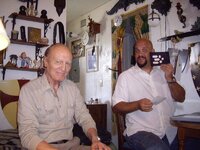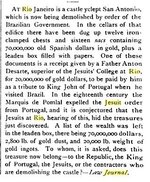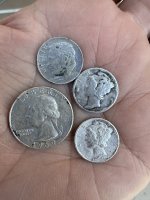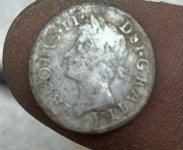sailaway
Hero Member
- Mar 2, 2014
- 623
- 815
- Primary Interest:
- All Treasure Hunting
Evidence of Early Spanish Mining
Ron Quinn account of hidden Jesuit treasures in Southern Arizona
Spanish Jesuit treasures
The Spanish discovered gold at the "El Plomo" Mine named for the lead it contained in 1687. Its name was later changed to the "Alto" Mine and was in production till 1933.
The Spanish mined the Oro Blanco district where the Montana Mine, aka Ruby Mine is for gold and silver. The mine was ranked third in output for Arizona for silver in 1933 and was the leader in lead and zinc in the 1930's
The Jesuits originally worked the Salero Mine in the 18th centry.
The Mowry Mine boasted a large silver-lead deposit in the Patagonia Mountains. Originally worked by the Jesuits during the Spanish era, the mine was acquired by Sylvester Mowry in 1859. Peak production cleared over $4,000.00 weekly.
Source: Southeastern Arizona Mining Towns By William Ascarza
Notice 5.14:
BTW will be gathering samples this week from the Mina Virgon.
Ron Quinn account of hidden Jesuit treasures in Southern Arizona
Spanish Jesuit treasures
The Spanish discovered gold at the "El Plomo" Mine named for the lead it contained in 1687. Its name was later changed to the "Alto" Mine and was in production till 1933.
The Spanish mined the Oro Blanco district where the Montana Mine, aka Ruby Mine is for gold and silver. The mine was ranked third in output for Arizona for silver in 1933 and was the leader in lead and zinc in the 1930's
The Jesuits originally worked the Salero Mine in the 18th centry.
The Mowry Mine boasted a large silver-lead deposit in the Patagonia Mountains. Originally worked by the Jesuits during the Spanish era, the mine was acquired by Sylvester Mowry in 1859. Peak production cleared over $4,000.00 weekly.
Source: Southeastern Arizona Mining Towns By William Ascarza
Notice 5.14:
BTW will be gathering samples this week from the Mina Virgon.
Last edited:


 How much would you need to make it profitable to haul it away?
How much would you need to make it profitable to haul it away? 


 Mebbe the Apaches did it?
Mebbe the Apaches did it? 



